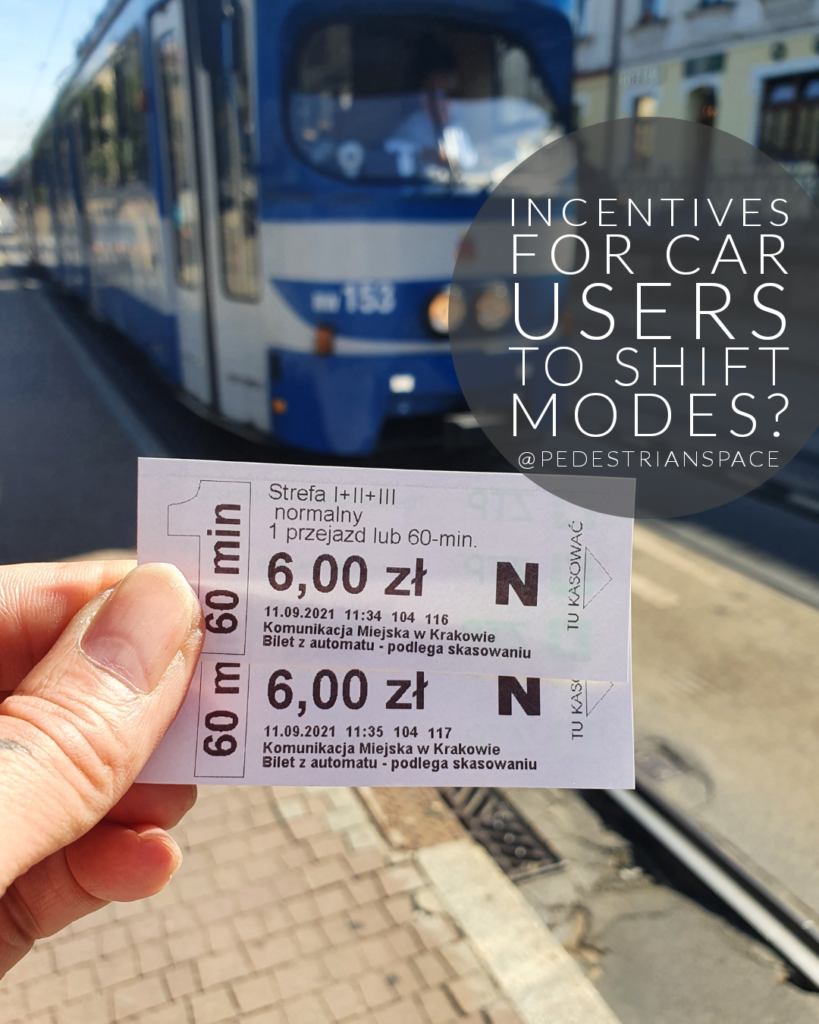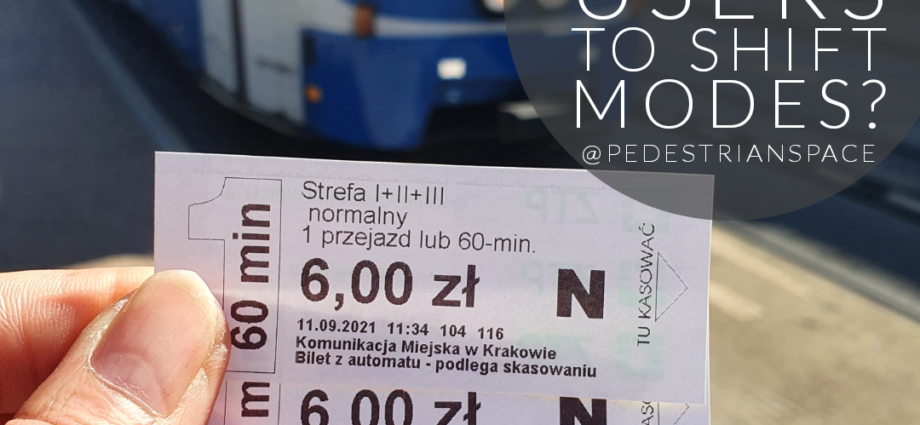What are the incentives for car users to shift to other modes of mobility (public transit, walking, cycling…)? What are the perceived obstacles in reducing car dependence and shifting to other modes? By ‘car users’ I refer to both drivers and passengers.
There is of course no lack of research on these behaviors and perceptions (which I also refer to in my reading), however cities still collectively face incredible challenges with the levels of car dependence in the population.
So what will the radical change (that is really needed in urban transport) require?
Yesterday, on #WorldCarFreeDay, I posted a mention that numerous Polish cities were offering free public transit to commemorate the day.
The plot thickened as I learned that in many of the cities, the free public transit was only available to individuals with vehicle registration (so essentially only a car-free day perk for those with cars).

Pictured here is a ticket for a tram ride in Kraków, covering 60 minutes of travel time and costing 6 złoty (approximately 1.30€). An urban planner in southern Poland explained to me this morning that while this ticket rate might seem “affordable” in comparison with rates in other European cities, it may be seen as costly for locals here when compared to the cost of fuel .
So if the cost of public transit is regularly seen as cost-prohibitive (when compared with driving), it is unlikely to be much of an incentive to ride for free one day per year (though I am eager to hear from cities what local response was).
For many, the benefits of riding public transit are simply worth the cost, not to mention that of course the accumulated costs of car ownership often prove to be higher than travelling via public transit (particularly using monthly passes).
This, however, is clearly not enough of a motivating factor for many people to shift from car use to public transit, walking and cycling.
If we want to reduce car dependence, frank and intensive discussions with car users (drivers and passengers alike) are essential to explore motivations to drive as well as perceived obstacles in shifting modes.
–Annika Lundkvist, Founder & Editor at Pedestrian Space

